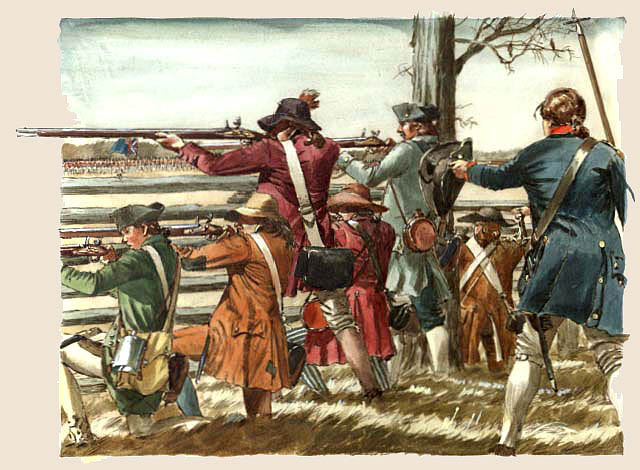A Revolutionary Community in the Backcountry
In Guilford County, former regulators rallied to the call of a new revolution. At the start of the American Revolution (1775-1776) it is estimated that a mere one third of American Colonists supported the Revolution, though in the backcountry those demographics were likely skewed more toward rebellion. The North Carolina Backcountry, it seemed, unleashed into a breeding ground for revolutionaries. By 1775, many North Carolinians sought outright independence from British rule.
Not to be confused with the Regulators before them, who rebelled against a select few corrupt colonial officials in North Carolina, this new rebellion sought cross-colonial, self-determined sovereignty. On May 19, 1775, revolutionary officials in the city of Charlottetown (known today as Charlotte), North Carolina published the Mecklenburg Resolves, otherwise known as the Mecklenburg Declaration of Independence, a direct response to the battles of Lexington and Concord; the Resolves stood as a call to action.
https://northcarolinahistory.org/encyclopedia/guilford-county-1771/
Treading Through A Hornets Nest
During the British Southern Campaign in the American Revolution (1780-1782), the British plowed through an incredulous South, capturing cities and farms alike. The American Continental Army experienced defeat after defeat by British General Cornwallis, though as the campaign dragged along, the tides of battle shifted to the Americans, the turning point being the Battle of Kings Mountain in October 1780, where under-organized American Militias overwhelmingly defeated the British.
During the winter of 1780, the tattered British Army marched northward, toward an unwelcoming populace. The support that the British Army once received from the colonists seemed to have evaporated. One British officer remarked that the march through the North Carolina Backcountry was akin to “treading through a hornet’s nest.” During Cornwallis’s march, he engaged Continental General Nathaniel Greene, who evaded and deplenished Cornwallis’s Army culminating in a climactic confrontation.
https://www.ncpedia.org/history/usrevolution/guilford-courthouse
Long, Obstinate and Bloody

https://www.ncpedia.org/history/usrevolution/guilford-courthouse
On March 15, 1781, Cornwallis and Greene’s armies met on patches of woods and farmland surrounding the Guilford County Courthouse. Greene’s Army was composed of approximately 4,400 militiamen, largely hailing from Virginia and North Carolina. Cornwallis’s army consisted of 2,000 men, who, by the battle at Guilford were starving and destitute; at first it seemed the revolutionaries’ war of attrition succeeded. Ultimately, at the end of the two-hour skirmish, Cornwallis’s men defeated Greene’s army in a display of costly warfare, ending in one of the bloodiest battles of the American Revolution.
https://www.ncpedia.org/history/usrevolution/guilford-courthouse
https://www.battlefields.org/learn/revolutionary-war/battles/guilford-court-house
Another Such Victory Shall Ruin Us
The Battle of Guilford Courthouse stands as the beginning of the end of the American Revolution. Around the time of the battle, a British official remarked that “another such victory would ruin the British army,” which was a sentiment that rung true. Cornwallis’s army continued to push northward, culminating in his entrapment and surrender at Yorktown by General George Washington in the Fall of 1781. The Battle of Guilford Courthouse immortalized General Greene as a Revolutionary hero, despite the fact that he lost the battle.
https://www.ncpedia.org/history/usrevolution/guilford-courthouse